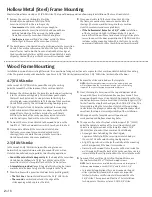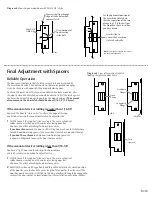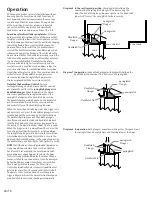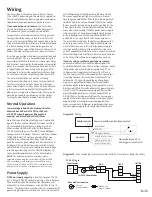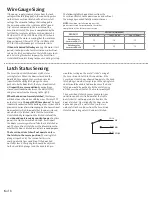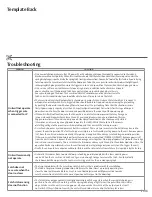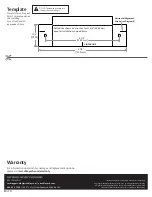
6
of 8
Latch Status Sensing
The Securitron UnLatch includes a latch status
sensing feature. When the door is closed and the
door latch has engaged the Securitron UnLatch
(specifically the springlatch plunger has been
pushed in by the door latch), the Securitron UnLatch
will
report this secure condition
by outputting a
closed circuit condition between the white (COM)
and green wires (see the drawing to the right).
When the door is not securely latched,
the closure
will be between the white and blue wires. This dry SPDT
output can carry
1 Amp at 30 VDC maximum
. This signal
is normally connected to the building alarm system and it
provides superior information compared to conventional
door contacts which show only that the door is closed,
not whether it is latched. Note that the Securitron
UnLatch’s ability to report on the latched status of the
door
depends on it receiving constant power
. Any time
power is cut to the Securitron UnLatch, it will report
the door as secure regardless of whether it is latched or
not. The Securitron UnLatch uses the information as to
whether the door is latched or not for a second purpose.
The Securitron UnLatch will not operate unless
the latch is in the secure position
(the springlatch
plunger is pushed in). The reason for this is to
avoid a potential jam condition. If the door had
not fully closed, the springlatch could be adjacent
to the dead latch plunger and the dead latch pin
would be resting on the metal “strike” casing of
the Securitron UnLatch. In this condition, if the
Securitron UnLatch was allowed to operate, the dead
latch plunger would attempt to push the springlatch
and it would be unable to do so because the dead
latch pin would be pushed in by the metal casing
of the Securitron UnLatch. The motor would jam.
The Securitron UnLatch senses any motor jam
condition and shuts itself down for that cycle
but it is better not to operate at all unless the
door is latched. Operationally, the door can be
opened anyway (it is not latched) so there is
no benefit to the end user from the Securitron
UnLatch operating unless the door is latched.
Wire Gauge Sizing
If the power supply is some distance from the lock,
voltage will be lost (dropped) in the connecting wires
so that the Securitron UnLatch will not receive full
voltage. The amount of voltage that is dropped in
the wires depends on the resistance of the “round
trip” wire run compared to the resistance of the
Securitron UnLatch. The issue is complicated by the
fact that the resistance of the Securitron UnLatch is
35 Ohms at 12 VDC or 120 Ohms at 24 VDC when it
is operating (the motor is moving) but the resistance
drops as low as 4 Ohms at 12 VDC or 16 Ohms at 24
VDC for 100 milliseconds just as the motor starts.
If the unit is denied full voltage
during this motor start
period, it will operate but with less torque so it will not
release the latch as crisply when the latch has pre-load
on it. Selecting thick wires to power the Securitron
UnLatch will maintain strong torque even during start up.
The following table shows distances from the
Securitron UnLatch to the power source and calls out
the wire gauge needed to fully maintain torque.
NOTE:
that if your installation requires the
power source to be more distant or has other
complications, the factory can assist you.
PRODUCT
DISTANCE (ONE WAY)
50 FT. [15 M]
100 FT. [30 M]
200 FT. [60 M]
Wire Gauge for
Securitron UNL-12
16
14
12
Wire Gauge for
Securitron UNL-24
22
20
18
GREEN
NC
NO
COM
BLUE
WHITE


